Six of Britain’s finest art and building conservationists on history, technology and the secrets of their trades
It takes a huge amount of skill and technical expertise to restore historic objects and interiors. John Goodall speaks to six specialists about their work and its challenges.

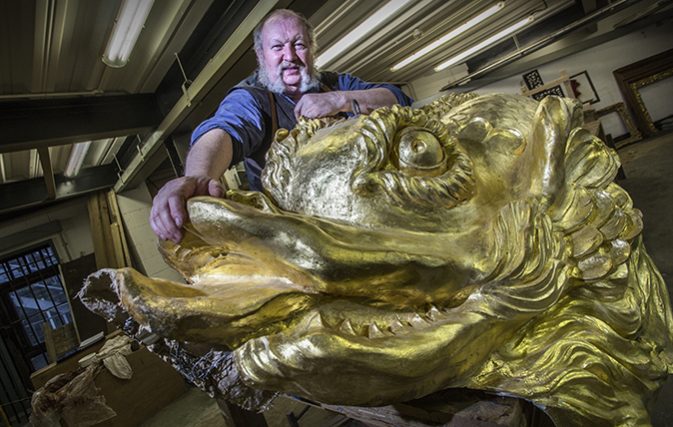
The joinery and woodwork conservator: ‘Conservation is an art as well as a science’
Alan Lamb runs Swan Farm Studios, which focuses on the restoration of historic joinery and woodwork. He also works on new sculpture commissions, such as the decoration of the Royal Barge for the 2012 Jubilee celebrations.
‘I don’t see new work as any more creative than the conservation side,’ he says. ‘For me, conservation is an art as well as a science.’
Alan’s studio is divided between Coleshill, Oxfordshire, and his home at Ironbridge
in Shropshire: ‘We spend considerable time on research so that we know what we’re dealing with and can set out clear options before starting work. That includes analysis of the environment and of the furnishings or fabric. I trained as a Baroque instrument maker, so I’ve spent a lot of time experimenting with early varnish recipes.
‘To date, there has been little interest in the historic varnish of buildings, but it has much to teach us, such as the shift from light to dark finishes over the course of the 19th century.
‘Where a historically important scheme is largely intact, my preference is to recover the original design intention, although that’s not always possible. Often, we often end up as both consultant and contractor.’
Alan taught at City and Guilds of London Art School for many years and is optimistic about the future: ‘There is a growing awareness of conservation issues generally.’
Exquisite houses, the beauty of Nature, and how to get the most from your life, straight to your inbox.
The wallpaper conservator: ‘You have to apply the methodology and technology of conservation on a huge scale’
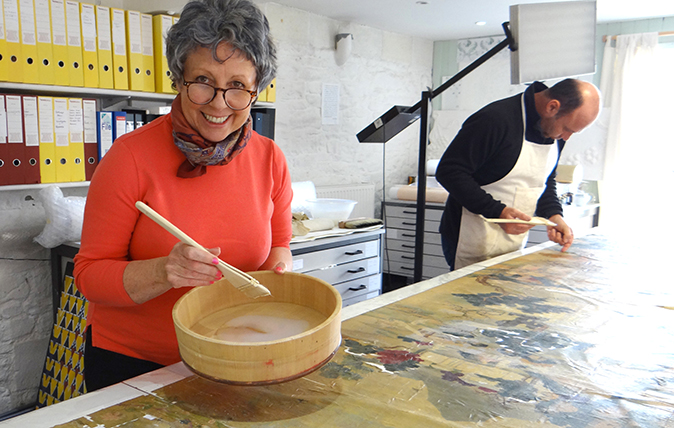
Allyson McDermott is a wallpaper conservator and consultant, working for, among others, the National Trust and Historic Royal Palaces. She also makes new papers using historic techniques.
‘I started off as a fine-art conservator, focusing on paper,’ she explains. ‘One day, I was approached about the conservation of a Zuber wallpaper and I was hooked.
‘I realised that you had to apply the methodology and technology of conservation on a huge scale when dealing with something that wraps itself around an entire room. Also, that you had to work with an awareness of a wider decorative scheme.
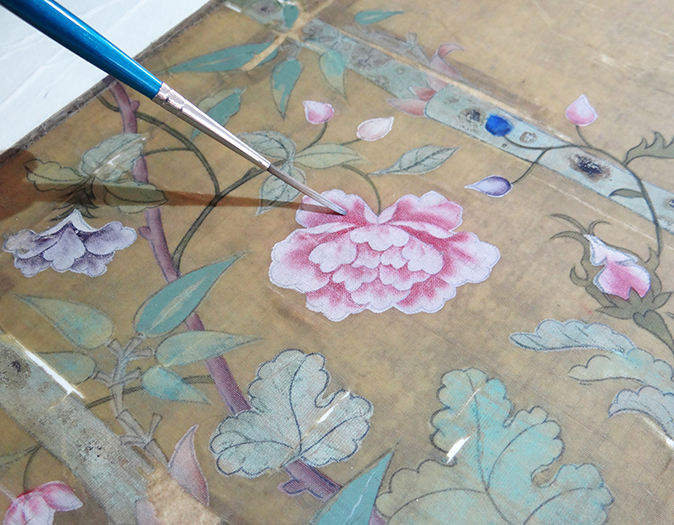
‘Wallpapers are part of the history of an interior, not a moveable feast. We preserve as much as we can and the patina of age is important.
‘At the same time, it is necessary to re-create what’s missing as accurately as possible, so that the wall reads coherently. Where it’s prohibitively expensive to do this using historic printing methods, we now use digital technology and scanning. It’s an approach that we have improved and developed in recent years, so much so that printing onto the appropriate prepared paper makes the old and new work virtually indistinguishable.
‘I love the fact that every project is different and the constant challenge of trying to find the correct way of doing things is very stimulating.’
The textile conservator: ‘I think of textiles as patients requiring sensitive care’
Ksynia Marko trained as a textile conservator at the V&A and, in 1991, became manager of the National Trust’s Textile Conservation Studio, where she’s worked for more than 25 years.
‘I think of textiles as patients requiring sensitive care. The first thing you have to do in any project is to get to know the textile: how it’s been used, altered and loved over time,’ she explains.
‘You also need to understand what’s happening to it in a practical sense. Fifteen minutes standing in a room that’s open to the public can reveal enormous amounts about how and why textiles are deteriorating.
‘Returning something to a pristine state can seem very appealing, but there’s integrity in restoring something so that it reflects its age and the passage of time. It’s only when historic textiles cease to be comprehensible or legible that they may be replaced.
‘I love discovering things about the objects I deal with, as well as the practical problem-solving and physical contact with fabrics that my work affords. This is a field in which there are few jobs, but it’s reassuring that so many people are interested in it.’
The stained-glass conservator: ‘I feel a personal connection with the maker’
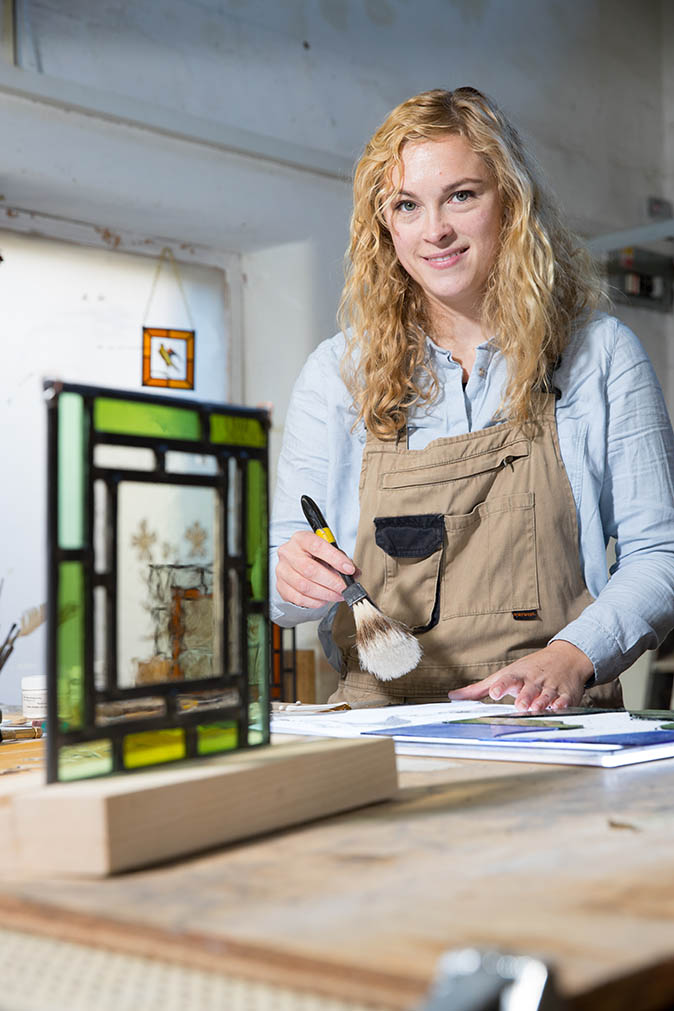
Elizabeth Hippisley-Cox established Eden Stained Glass to undertake conservation, new commissions and consultancy. ‘An important lesson I learned as a William Morris Craft Fellow,’ she remarks, ‘is that, in building conservation, there are always three parties involved: the conservator, the custodian and the building.
‘To conserve stained glass, you need to understand the window, its subject, its materials and its history. In as far as it’s archaeologically significant, for example, it needs to be preserved intact, without alterations. However, a window can have many other points of significance, too, and these need to be taken into account. If it’s a work of great artistic importance, for example, the design needs to be legible, so that people can read it and enjoy it.
‘My aim when restoring a window is to pass it on without diminishing it. Where anything is repaired, the highest-quality materials and workmanship must be employed.
‘One of the things I particularly enjoy is discovering historic fingerprints on windows. If you handle a piece of painted glass carelessly before it’s been fired in a kiln, you leave a fingerprint on it forever. When I find those marks, I feel a personal connection with the maker.
‘If you work on stained glass, particularly in churches, you want to share these discoveries and leave custodians and communities with a good understanding of and appreciation for the treasures they look after.’
The historic-paint consultant: ‘I love the fact that I’m still learning’
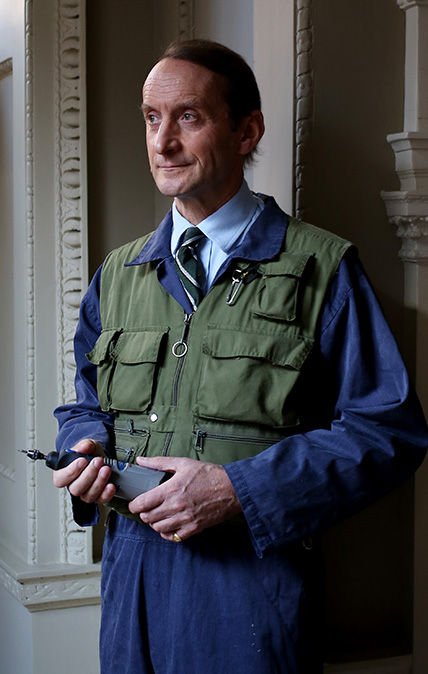
Patrick Baty was a soldier before he turned his hand to a completely different profession. ‘I work in several capacities to do with paint and colour,’ he says, ‘and only on historic buildings, because that’s where my interest lies. The crucial thing in any job is to know what the object of the exercise is.
‘Sometimes, it’s to re-create a historic scheme, in which case, I do the necessary analysis. Alternatively, it may be to formulate a plan appropriate to the period and form of a room, for which I draw on my experience.
‘There’s an aesthetic element to the job, but, as far as possible, I try to arm myself with all the available information and limit myself to matters of fact. A reasonable time frame is essential; planning for the decoration of a room takes time and can involve quite a lot of practical problem-solving. If a room looks shabby because of damp, that problem has to be sorted out before you add new paint.
‘I love the fact that I’m still learning and that I’m asked to look at such a variety of material, from a country house one week to a 1930s shop front the next.’
The wall-painting conservators: ‘Preserving historic authenticity is our priority’
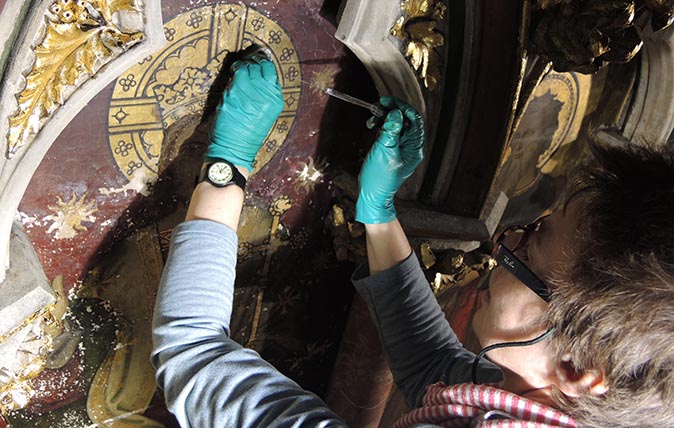
Lisa Shekede and Stephen Rickerby are wall-painting conservators who work internationally. ‘Our projects have included Byzantine churches in Cyprus, ancient tombs in Egypt, Buddhist caves and temples in China and Bhutan and rock-cut churches in Ethiopia. We also work in the UK, on domestic wall-painting schemes as well as on church buildings great and small, from small parish churches to St Paul’s Cathedral.
‘One common misunderstanding is that our work focuses on the artistic re-creation of missing parts of murals. In fact, the emphasis of wall-painting conservation today is on diagnosing the causes of deterioration and altering the natural conditions that contribute to the decay of paintings. Physical treatment focuses on essential stabilisation.
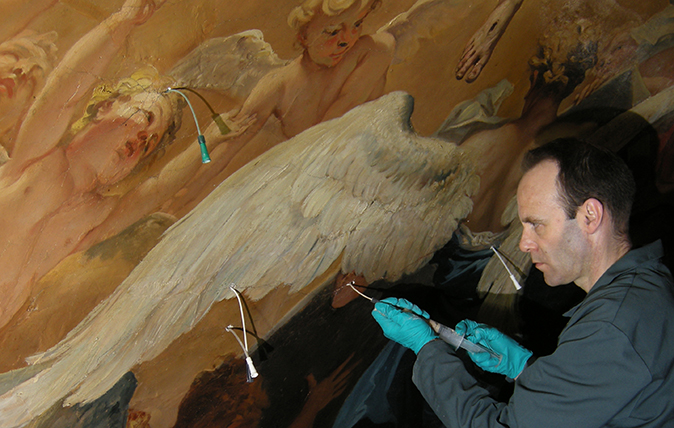
‘Where appropriate, we do clean the surface of paintings to increase legibility and, for the same reason, we would soften the visual impact of necessary infill or repair.
‘This work requires a wide variety of skills, from scientific analysis of original plasters and paint materials to the monitoring and assessment of damaging environmental conditions. Preserving the historic authenticity of wall paintings is our priority.’

John spent his childhood in Kenya, Germany, India and Yorkshire before joining Country Life in 2007, via the University of Durham. Known for his irrepressible love of castles and the Frozen soundtrack, and a laugh that lights up the lives of those around him, John also moonlights as a walking encyclopedia and is the author of several books.